After WW2, many women wanted to trade their utilitarian wardrobe for something more feminine and fashion forward. Film stars and Hollywood glamour took the public by storm, with the likes of Marilyn Monroe, Audrey Hepburn, and Brigitte Bardot becoming fashion icons and influencing trends. Christian Dior, Hubert Givenchy, Clare McCardell, and Cristobal Balenciaga were leading couturiers and became prominent designers by having their clothes featured on screen.
Emerging in 1947, Christian Dior’s New Look Corolle Line found success the moment it was introduced. Characterized by the nipped in waist and full skirt, Dior’s silhouette was and still is considered to have led the style. Style in the 50s had an emphasis on shape and matching your accessories (e.g. gloves, earrings, hats, etc.) with your outfit which also corresponded with the occasion. The Metropolitan Museum of Art’s website has a collection of authentic 1950s accessories and clothes from luxury fashion houses.
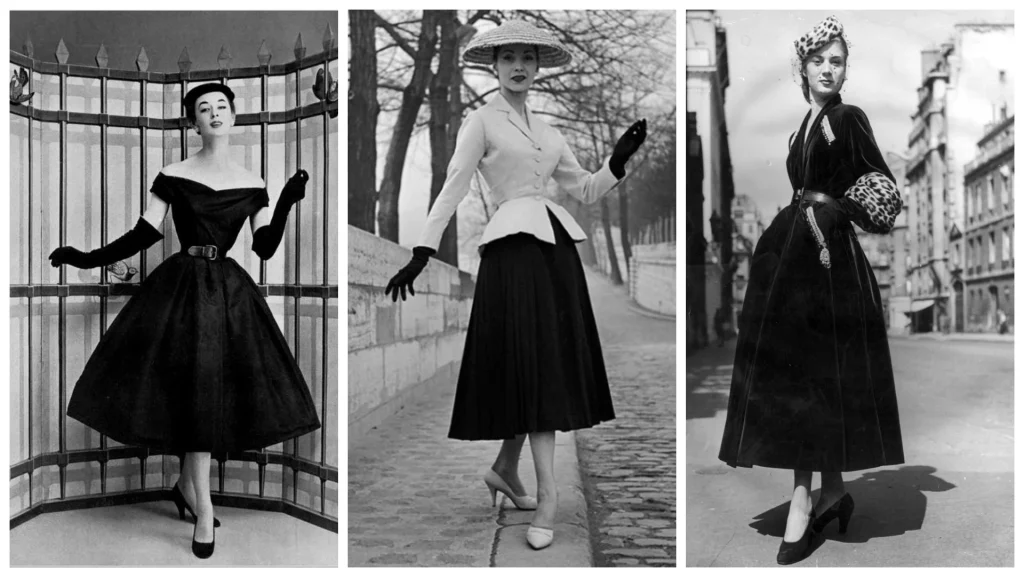
Casual clothing for more leisurely activities came about due to new synthetic and easy care fabrics that had been developed during the war. Women would usually wear sweaters, cardigans, or blouses with slacks which was more comfortable. Despite many women still wearing dresses, women’s pants became more mainstream, with styles such as high-waisted, cigarette, and capri being the most popular.
Below are lists of popular colours, fabrics, and prints for womanswear in the 50s.
Spring/Summer:
- Light pink
- Powder blue
- Cream
- Maize
- Lilac
- Kelly green
Autumn/Winter:
- Dark Brown
- Rust
- Black
- Charcoal grey
- Royal Blue
- Olive
- Purple
- Peacock
- Gold
- Navy

Fabric:
- Cotton
- Denim
- Corduroy
- Silk
- Rayon
- Net/Organdy
- Synthetics
Prints:
- Polka dots
- Plaid
- Gingham
- Floral
- Abstract
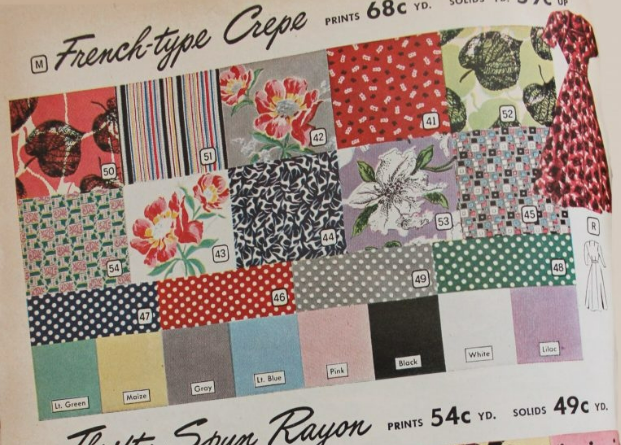

Mainstream Casual:
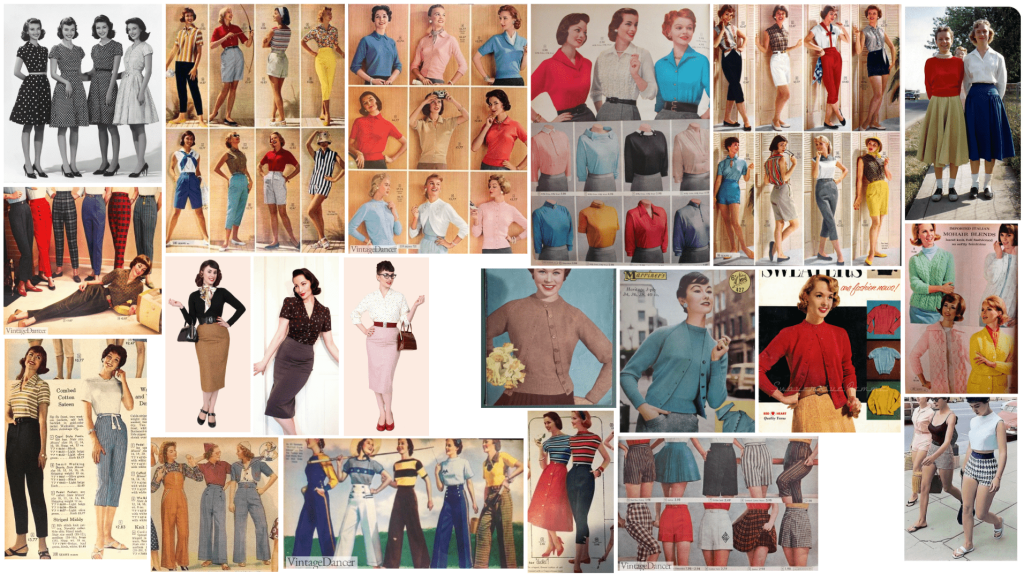
It was common for women who lived in the city to dress up for almost every outing. This was also typical for Pin-Up Girls – especially Marilyn Monroe who favoured capris, high waisted shorts, and long pencil skirts. She paired these with a low cut blouse or tight fitting sweater.
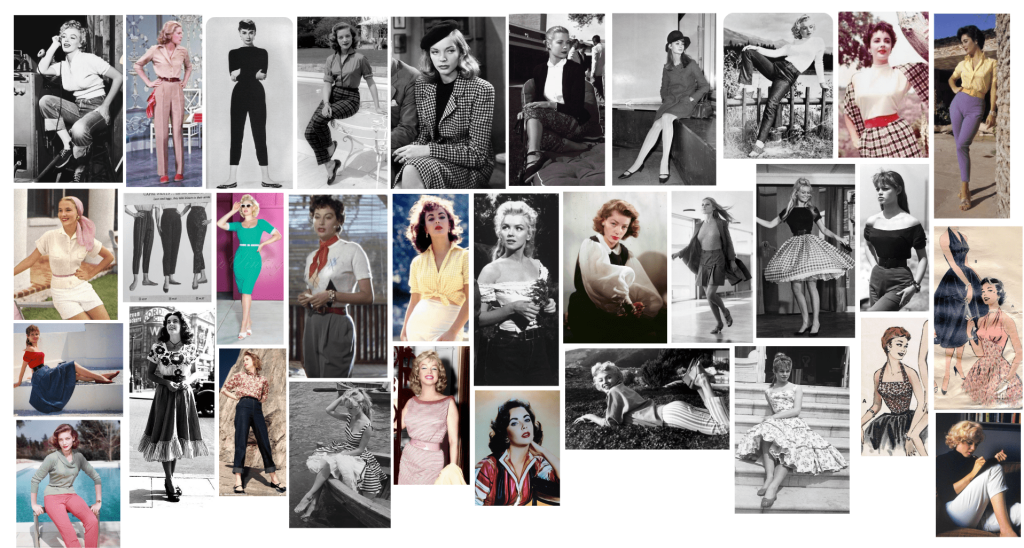
Evening/Formal & Hollywood Glam:
Formal wear was extravagant and glamorous, with bright colours and designer brands. Women would wear statement necklaces and earrings that matched their dress. Gloves, although not always worn, would be longer (elbow length) and could be worn under bracelets but never under rings.
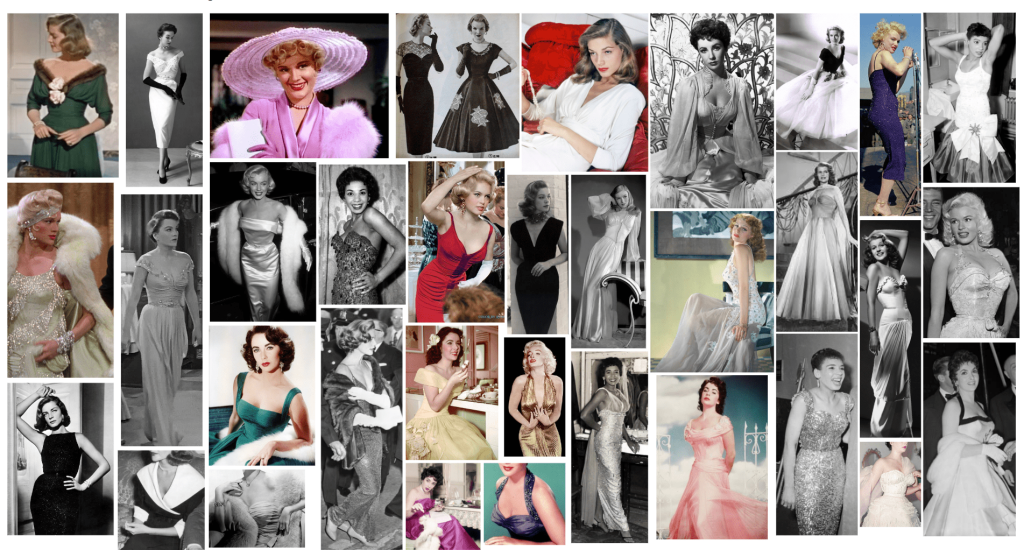
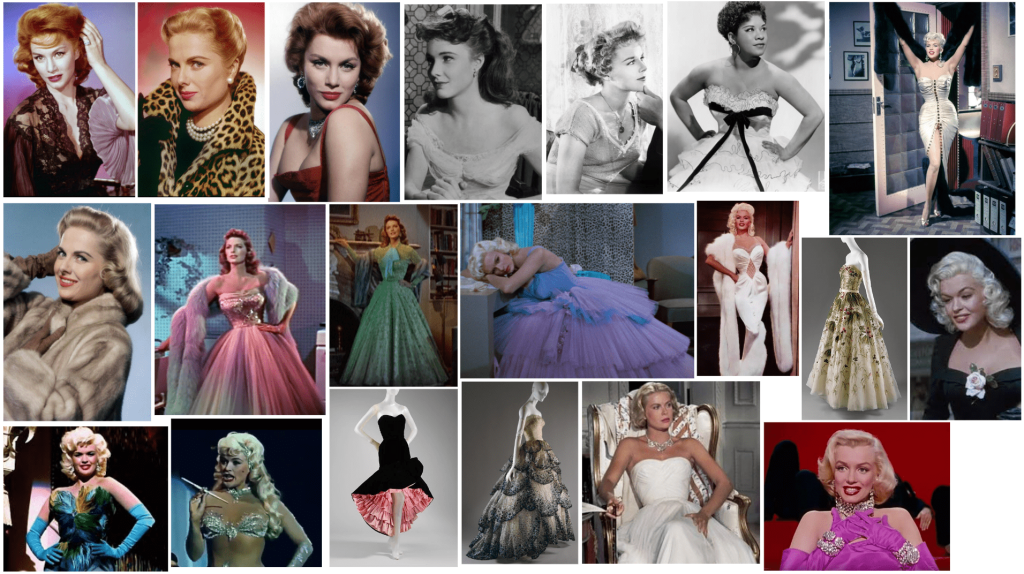
Reply